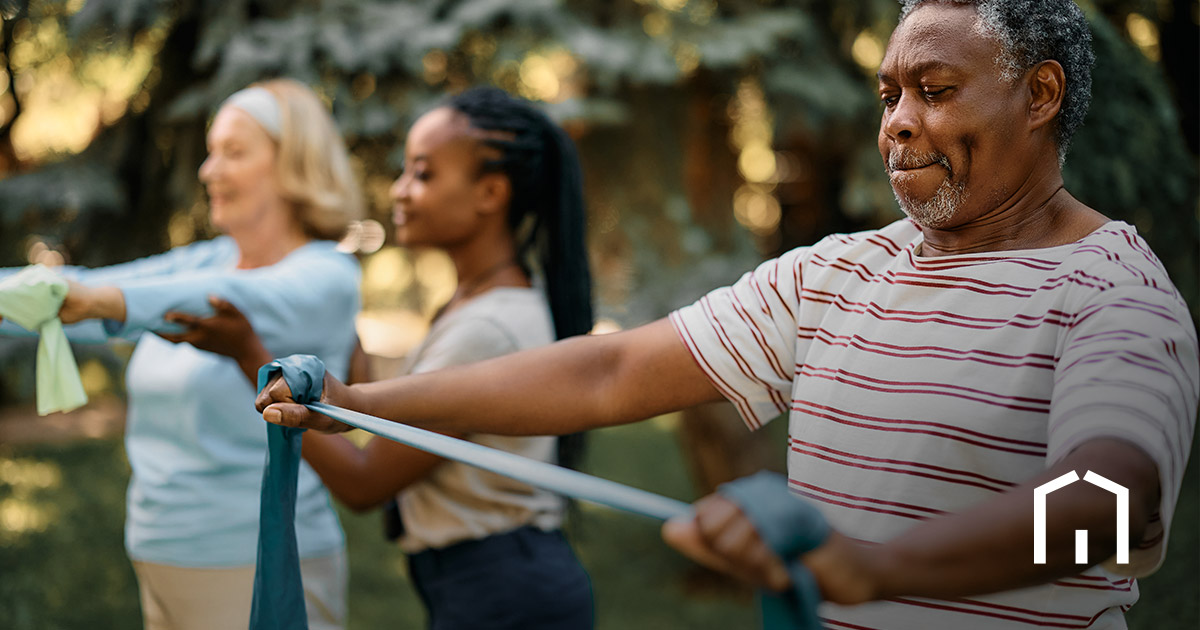

Finding the Right Balance: Exercise Prescription for Seniors
Guest Post from HealthMax Physiotherapy Clinics
Exercise is crucial for improving health and well-being, especially among older adults. However, designing an effective exercise program for the elderly requires careful consideration of various factors. In this article, we will delve into specific parameters such as specificity, functional training, frequency, sets, and duration, aiming to empower patients and healthcare providers in developing effective exercise programs. At our physiotherapy clinic in Scarborough, we place great importance on educating our patients about the importance of exercise and ensuring they engage in it correctly. Our goal is to provide comprehensive information that supports the development of exercise programs promoting health and well-being for the elderly population.
Specificity in Exercise Prescription
The principle of specificity is fundamental when prescribing exercises for seniors. It involves selecting exercises that align with the desired outcome, considering factors such as muscle contraction, contraction speed, and functional movement. For example, when aiming to strengthen the quadriceps to enhance chair mobility, squatting movements are more effective than open-chain, full-arc extension exercises. Research supports the significance of specificity in strength training, showing greater improvements in squat performance compared to other exercises.
To ensure effective exercise prescription, it is advisable to seek guidance from healthcare professionals with expertise in the field, such as physiotherapists or occupational therapists. Their specialized knowledge can optimize the effectiveness and safety of prescribed exercises.
Functional Training for Seniors
Functional training focuses on overloading specific movements or activities rather than isolating individual muscles. It recognizes that functional activities involve multiple systems, including muscles, joints, sensory systems, and visual/vestibular systems. By incorporating body weight, balance, and multiple joints, functional training enhances overall neuromuscular function. For example, to improve transfer skills, a patient can be challenged during the transfer while holding an object or weight.
Functional training can also benefit older adults struggling with outdoor ambulation by incorporating obstacle courses with diverse surfaces and environmental challenges. Progression in functional exercises involves moving from simple to complex movements, adjusting speed, transitioning from stable to unstable surfaces, and incorporating various planes of movement and compliant surfaces.
Speed and power training are important for functional activities and can be improved through targeted exercises and incorporating timed components.
Frequency of Exercise Sessions
The recommended frequency of exercise sessions per week varies depending on the type of exercise. Aerobic exercise is typically advised three to five times per week, with an intensity of 70% to 85% of maximum heart rate. Skill and balance exercises can be practiced daily, with variations in intensity. Strength training targeting the same muscle group at high intensity requires two to three sessions per week. However, if daily sessions are performed, it is necessary to vary the muscle groups being trained. Consulting with a healthcare provider is recommended to determine the appropriate frequency and type of exercises.
Sets and Repetitions
Traditionally, three sets of exercise were recommended for strength gains, but recent studies suggest that one set is sufficient, especially for untrained individuals, beginners, and older adults. Most strength gains occur during the first set, and reducing the number of sets can prevent boredom and minimize the risk of injury. It may be advantageous to create diverse functional exercises that challenge muscles in various ways instead of focusing on multiple sets of the same exercise.
Duration of Exercise Bouts
The duration of each exercise bout or the overall duration of an exercise session depends on the type of exercise. Skill and balance activities are typically practiced for 20 to 30 minutes per session. Aerobic exercise is commonly set at 30 minutes, including warm-up and cool-down periods. Stretching exercises generally yield optimal results when held for 30 seconds in younger individuals, while older adults may benefit from performing four repetitions lasting 60 seconds each. The duration for strength training varies but one set of a 10-repetition maximum (10 RM) is effective.
It is important to note that individualized guidance from healthcare professionals is highly recommended to tailor exercise programs and ensure safety and effectiveness.
Final Thoughts
Exercise plays a crucial role in promoting health and well-being for older adults. Designing an effective exercise program for seniors requires careful consideration of specificity, functional training, frequency, sets, and duration. While this article provides valuable information, individualized guidance from healthcare professionals is essential to assess individual needs, tailor exercise programs, and ensure safety and effectiveness.
About the Author:
HealthMax Physiotherapy, situated in Toronto, Canada, is a versatile healthcare facility that caters to a wide range of individuals, including the general public, older adults, as well as those impacted by work-related incidents and motor vehicle accidents. Our clinic is dedicated to offering comprehensive treatment and services focused on both recovery and injury prevention. For further information about our services, please visit our website at www.healthmaxphysio.com.
Why Right at Home?
- Over 20 years of experience. Right at Home has been providing award winning customized senior care and home care for over 20 years.
- YOUR Caregivers are all part of YOUR Care Team. This means that there is no revolving door of Personal Support Workers and Nurses. With the help of your Care Planner, you choose and get to know them. This leads to an level of care for your loved one that is unsurpassed in our industry.
- Working with government support. Your Care Planner will work to help you find the government supports you are eligible for (if you would like them) and then work to find a solution for the care needs that go above what government and family can do. We will also work around the government care plan so that we are enhancing it.
We help in home, wherever home is to you.
Our Caregivers are always out in the community visiting homes, Retirement Residences, Long Term Care (LTC), hospices and hospitals.